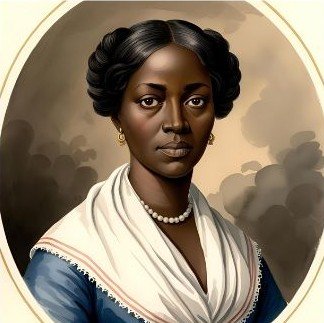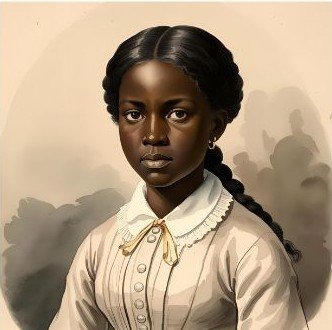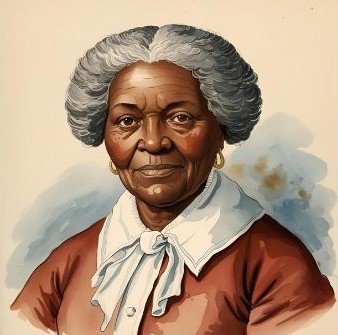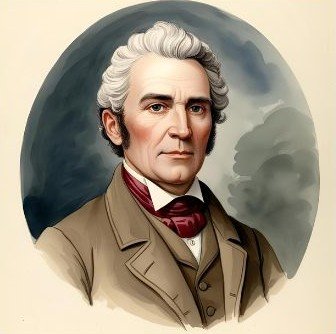1. Introduction
Can the past ever be left behind? In Beloved, Toni Morrison dives deep into the lingering grip of memory, trauma, and motherhood in the aftermath of slavery. This is not just a ghost story—it’s a reckoning.
Why should you read Beloved? For one, it’s a Pulitzer Prize-winning novel by Toni Morrison[1], the first African American woman to win the Nobel Prize in Literature[2]. But beyond its accolades, Beloved is a poetic and gut-wrenching exploration of history’s scars—ones that don’t fade just because the laws change. Morrison doesn’t just tell a story; she demands that we bear witness.
2. Plot Summary
Set in post-Civil War Ohio, Beloved follows Sethe, a formerly enslaved woman who is trying to build a life of freedom with her daughter, Denver. But freedom proves elusive. Despite no longer being enslaved, the past lingers—not just in Sethe’s memories but in her home, which is haunted by an angry, restless spirit. Then, one day, a mysterious young woman named Beloved appears. She is beautiful, strange, and eerily familiar. Could she be the embodiment of Sethe’s lost child, come back from the beyond?
At its heart, Beloved is about the inescapability of trauma. Sethe’s past as an enslaved woman is full of horrors, and her love for her children once drove her to a desperate, unthinkable act. As Beloved’s presence grows stronger, Sethe must confront the impossible question: Can love justify the unspeakable? Through haunting prose and shifting perspectives, Morrison forces us to reckon with history’s ghosts—both real and metaphorical.
3. Key Characters
Protagonists
Sethe

A mother whose love knows no bounds—and whose past refuses to let her go. Fiercely protective and deeply scarred, she carries the weight of a harrowing decision that defines her existence. Sethe is a woman shaped by both resilience and regret, forever haunted by what she did in the name of love.
Denver

Sethe’s youngest daughter, growing up under the heavy shadow of a ghost—both literal and metaphorical. Isolated and hesitant, she struggles to find her own voice in a house ruled by secrets. But when the past threatens to consume everything, Denver must decide whether to step into the light or remain trapped in the darkness.
Beloved

A young woman with an otherworldly presence and an insatiable need for attention. She is beautiful, eerie, and utterly consuming. Is she Sethe’s lost child? A restless ghost? Or something even more terrifying—the embodiment of history’s unresolved grief? Beloved is both a dream and a nightmare, seducing as much as she suffocates.
Supporting Characters
Paul D

A man with his own ghosts, carrying his pain in a rusted tobacco tin where his heart should be. Once enslaved alongside Sethe, he re-enters her life offering the promise of a future—if only he can outrun the past. He is proof that survival is not the same as freedom.
Baby Suggs

Sethe’s mother-in-law and the closest thing the community has to a prophet. She preaches self-love and healing, but even her mighty spirit is crushed under the weight of relentless cruelty. In a world that refuses to let Black people rest, Baby Suggs dares to dream of peace—and pays the price for it.
Mr. Garner

An enslaver who, by comparison, seems “benevolent”—though that says more about the horrors of slavery than about him. He allows Halle to buy his mother’s freedom, treating his enslaved workers with a level of “respect” that still leaves them in chains. His death paves the way for far greater brutality.
Schoolteacher

The embodiment of cold, calculated cruelty. After Mr. Garner’s death, he takes over Sweet Home, stripping away any illusion of humanity the enslaved once had. He sees people as numbers, bodies as property, and education as a tool for control. Where Mr. Garner pretended civility, Schoolteacher doesn’t bother—he is the unfiltered reality of oppression.
Character Dynamics
At the novel’s core is the triangle of Sethe, Denver, and Beloved. Denver is torn between fear and fascination with the ghostly intruder. Sethe, blinded by guilt, lets Beloved consume her. Meanwhile, Beloved is a force of both love and destruction—an echo of history demanding to be acknowledged.
4. What to Look For While Reading
Themes
- Memory and Trauma – In Beloved, the past is not a distant memory; it’s alive, breathing, and relentless. Morrison doesn’t just tell us that slavery’s horrors linger—she makes us feel it. Trauma isn’t something her characters can outrun. It seeps into their homes, their relationships, and even their identities, shaping them in ways they don’t always understand.
- Motherhood and Sacrifice – Sethe’s love for her children is boundless, but Morrison asks us to consider: Can love go too far? When does protection become destruction? Sethe’s journey forces readers to confront the painful reality that sometimes, love and suffering are inseparable.
- Identity and Freedom – What does it mean to be free? For Sethe, freedom is more than just the absence of chains—it’s the ability to exist without fear. For Paul D, it’s about reclaiming his own sense of self. For Denver, it’s about stepping out of her mother’s shadow. Morrison makes it clear: freedom isn’t just given, and it has to be fought for—inside and out.
- Fragmented Family – Slavery tore families apart, and its effects ripple through Beloved. Morrison explores the way forced separations, loss, and trauma leave families struggling to reconnect—or even define what family means.
Symbolism
- Beloved – More than just a ghost, Beloved embodies unfinished grief, unresolved trauma, and the weight of history. She is both a lost child and the collective memory of an entire people—a haunting reminder of what cannot be forgotten.
- 124 Bluestone Road – This house isn’t just haunted; it’s heavy with history. It doesn’t let go of its past, much like Sethe herself. The walls seem to breathe, whisper, and mourn, serving as a chilling metaphor for trauma that refuses to be silenced.
- Water and Rebirth – Water in Beloved isn’t just about physical cleansing—it marks transformation. Sethe’s journey across the river, Beloved’s mysterious reappearance, and the constant imagery of water all hint at the thin line between life and death, past and present, freedom and captivity.
- The Scar on Sethe’s Back – Described as a “tree,” the scars on Sethe’s back are more than physical wounds—they are a map of her suffering, survival, and resilience. They mark her pain, but they also tell a story, one that she carries even when she tries to forget.
5. Takeaway Lessons
I have to admit—this book left me shaken. Yes, the eerie presence of an angry spirit lingers in its pages, but that’s not the only thing that haunts me. What truly unsettled me was the sheer weight of loss—the pain of fragmented families ripped apart by forces beyond their control. It reminded me of Huckleberry Finn, where Jim mourns for his wife and children, separated from him by slavery’s cruel hand. The idea of tearing loved ones apart like that is almost too much to bear. But unless we take a hard look at history—unless we truly sit with what slavery meant and what it did—we might not even notice. It’s easy to talk about injustice in the abstract. Morrison makes sure we feel it.
And then there’s Halle. What happened to him? He wasn’t one of the few who made it out; but instead, he simply vanished. He’s just gone. His fate, like so many others, is a question without an answer. And Sethe—whipped while pregnant, her body permanently marked with the “chokecherry tree” of scars on her back[3]—is a walking testament to both suffering and survival. The pain isn’t just physical. It’s etched into her soul, a reminder of the endurance required just to exist.
Beloved isn’t an easy book, but it’s a necessary one. Morrison refuses to let history fade into the background. She shows us how its ghosts live on—not just in memory, but in identity, in family, in the very fabric of society. The scars of slavery didn’t disappear when the laws changed. They remain, shaping the present in ways we may not always see but must never ignore.
More than just a novel, Beloved is a reckoning. It forces us to confront the horrors of the past so that we don’t repeat them. Some books entertain. Some inform. Beloved does something greater—it refuses to let us look away.
Discussion Points
- Was Sethe’s decision justifiable, given her circumstances?
- How does Morrison use the supernatural to explore historical trauma?
- How do the characters define freedom, and does anyone truly achieve it?
6. Final Recommendation
Who Should Read This Book?
If you’re drawn to African American literature, historical fiction, or stories that unearth the deepest layers of memory, trauma, and survival, Beloved is essential reading. This isn’t a book you breeze through; it’s one that grips you, unsettles you, and refuses to let go. Morrison’s prose is so powerful, so immersive, that you don’t just read about pain—you feel it. It’s the kind of book that leaves a mark. If Huckleberry Finn made you reflect on the brutal separations of slavery, Beloved takes that reality to an even deeper, more visceral level.
Closing Statement
Beloved is not just a ghost story—it’s a literary force. Haunting, poetic, and painfully relevant, it demands attention, reflection, and emotional courage. Morrison doesn’t simply write; she commands. She doesn’t just tell a story; she insists that we bear witness. If you’re ready for a novel that challenges, lingers, and changes you, Beloved is waiting.
[1] “Toni Morrison | Biography, Books, Beloved, The Bluest Eye, & Facts | Britannica,” accessed March 24, 2025, https://www.britannica.com/biography/Toni-Morrison.
[2] “Nobel Prize in Literature 1993,” Summary, NobelPrize.org, accessed March 24, 2025, https://www.nobelprize.org/prizes/literature/1993/summary/.
[3] Toni Morrison, Beloved (Vintage Books, 1987), www.vintagebooks.com. P.18